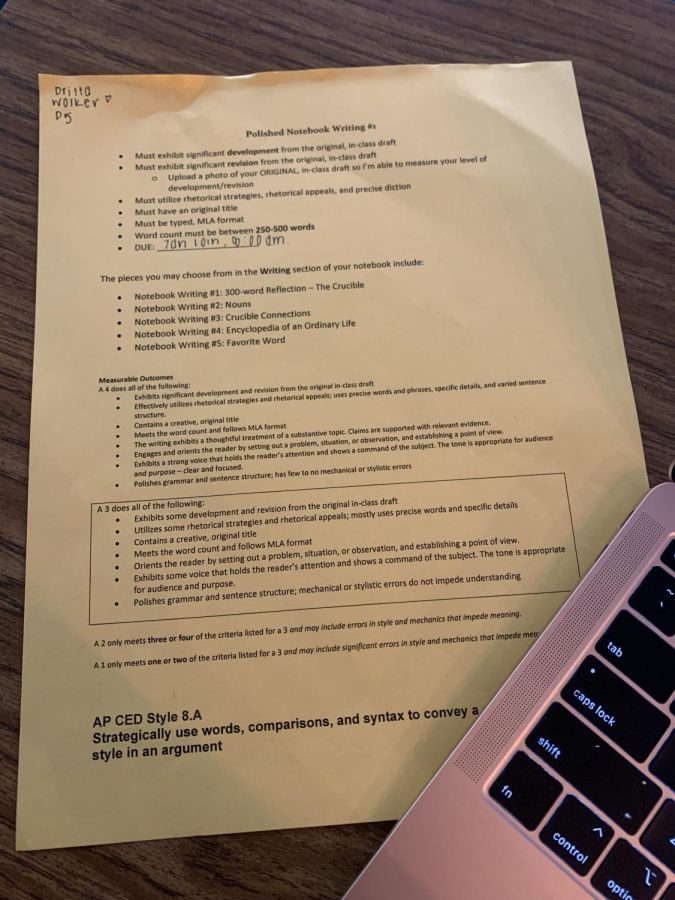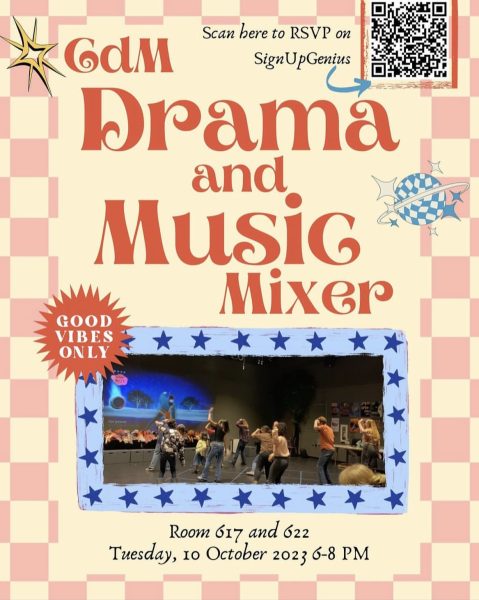Polished Notebook Writing: An AP Lang Creative Assignment
In the past week, AP Lang students have been given the task of revising an old notebook prompt into a final, creative piece. Five options were given to write about:
A 300-word reflection about the Crucible, a piece about a favorite place, a prompt dedicated to Crucible connections, and a favorite-word prompt. The majority of students chose the second and fifth options. Several students were relieved about this grading standard because it encourages many ways to go about structuring the 250-500 word paper, as opposed to a very logical approach when writing a rhetorical analysis. Everyone has the freedom to create a story or analysis that can take an entirely unique and unexpected turn.
When choosing her favorite word to write about, junior Sia Vij had chosen Prerna, or ‘inspiration’ in Sanskrit as she noted “I grew up hearing that word and how important it was to my family so it became important to me as well. It plays a part in all aspects of my life.” Her piece appeals to the senses in a way that allows you to quite literally feel the way in which she describes a new idea in your mind as a glowing, exhilarating feeling that cycles into an unstoppable sense of inspiration: “Your brain’s starting gun has fired, you finally get off the couch.” Sia’s favorite word is greatly inspired by her grandmother, a constant reminder to never waste potential; “All the stones I have thrown have led me to the mesmerizing ripples of water, the beautiful patterns that reflect my capabilities.” Vij’s piece touches on emotion and nostalgia to approach the reader in a comforting and inspirational way.
Louise Eriksson has also chosen her favorite word to be in a foreign language, this time Swedish. Livsnjutare. She proudly states “It means enjoyer of life and living life to its fullest potential. It’s something many (including myself) tend to forget —to enjoy life and treasure the small moments. So, I wanted to create a piece that depicted my special Swedish joys and memories.” There is something so powerful about using a favorite word that’s in your native language —it’s something you grew up with, an important family moral, a deeply-ingrained reminder that stays with you through thick and thin.
Simone Parvizi, yet again, had chosen to write about a word in Farsi, ‘nooshidani.’ “I picked it because the word ‘shirin’ in Farsi means sweet, and I used to think it was pronounced nooshirani. It made me correlate it with something incredibly refreshing, pure, and sweet. Hearing it always transports me to a happy place.” Parvizi’s story was written from different points of view in each of her paragraphs: two sweet lovers in Paris, to a sweet girl tucking herself in bed after a long day. Parvizi’s writing reminds you of just how sweet life can be, how the feeling of love, comfort, and excitement are certainly very sweet emotions. Her writing felt like a cool crack of a chilled seltzer on a blistering hot summer day.
With the introduction of this new standard, kids truly wrote from their hearts. No limits. Just pure writing.

















